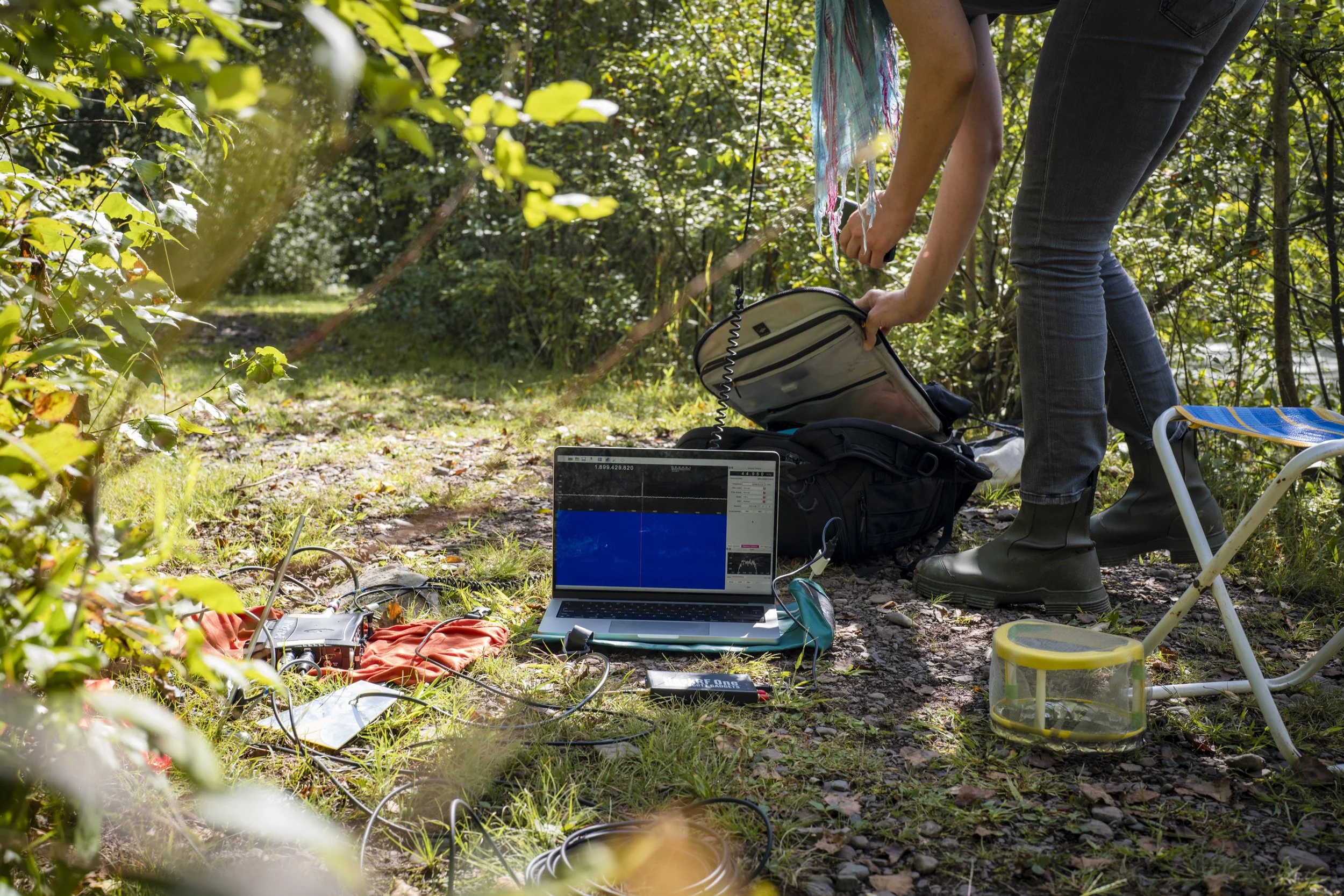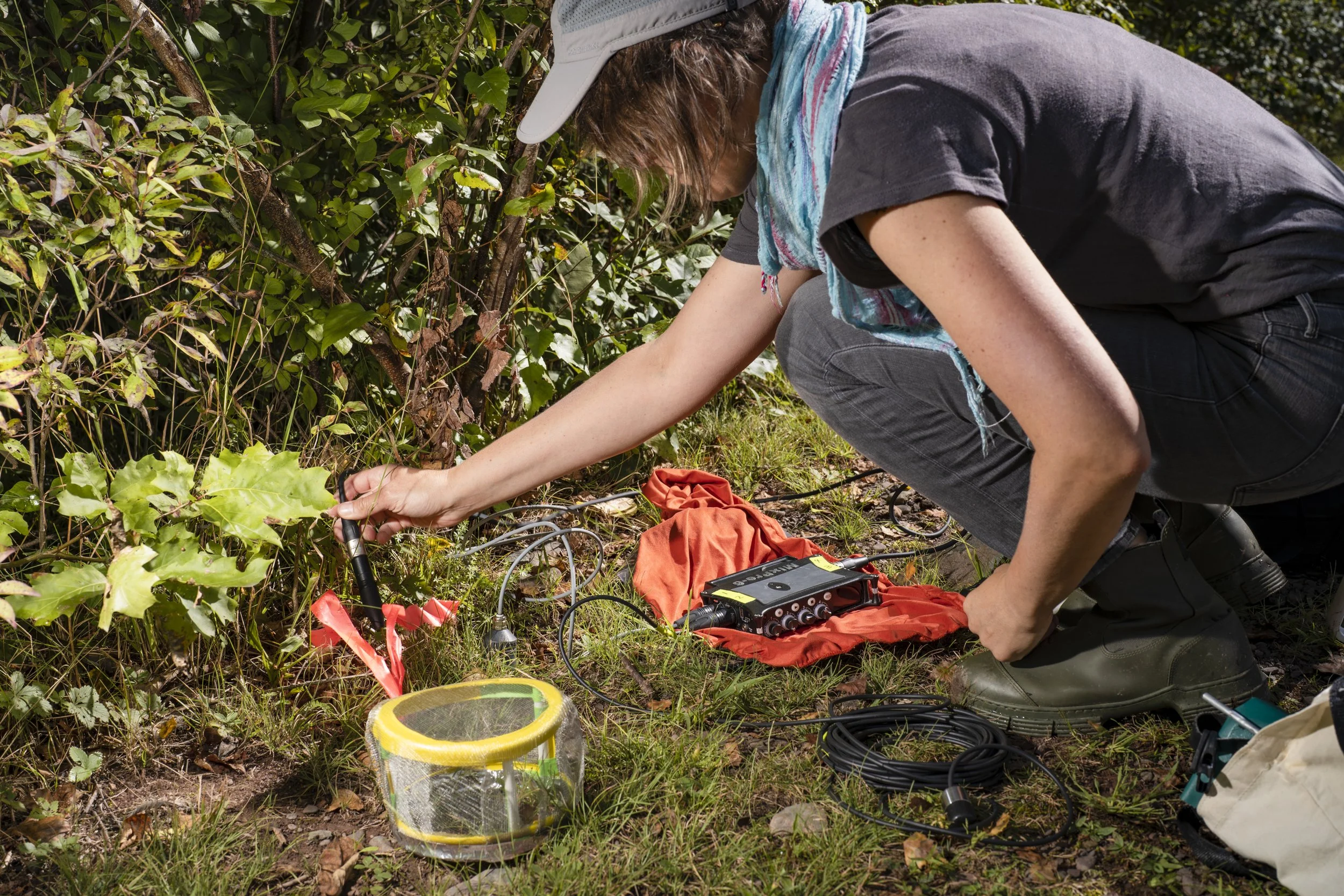SPECULATIVE ECOACOUSTIC COMPOSITION SYSTEMS
2022-ONGOING, by Lisa Ann Schonberg
In this speculative ecoacoustic composition process, the material of ecological information shapes and informs the resulting music: the inputs of environmental sound are the creative material, as well as the modulators of each other. Site location, placement of microphones and playback elements, as well as focal species and relations, are grounded in ecological observation. The substrate within which the focal insects live is used as a sonic filter, further imprinting the ecological material of the environment on the resulting music. Multiple types of microphones are used, to build an abstracted representation of the sonic range of possibilities of beyond-human sensing. What are we not hearing? Human sounds are included, rather than avoided or edited out, in order to recognize and affirm that we are part of the environments we live in, of nature, rather than independent - and to point to the various impacts and roles of human-made sound (anthrophony) in soundscapes. I developed these methods as part of my PhD dissertation research. Down below there is a playlist of some of those works.


